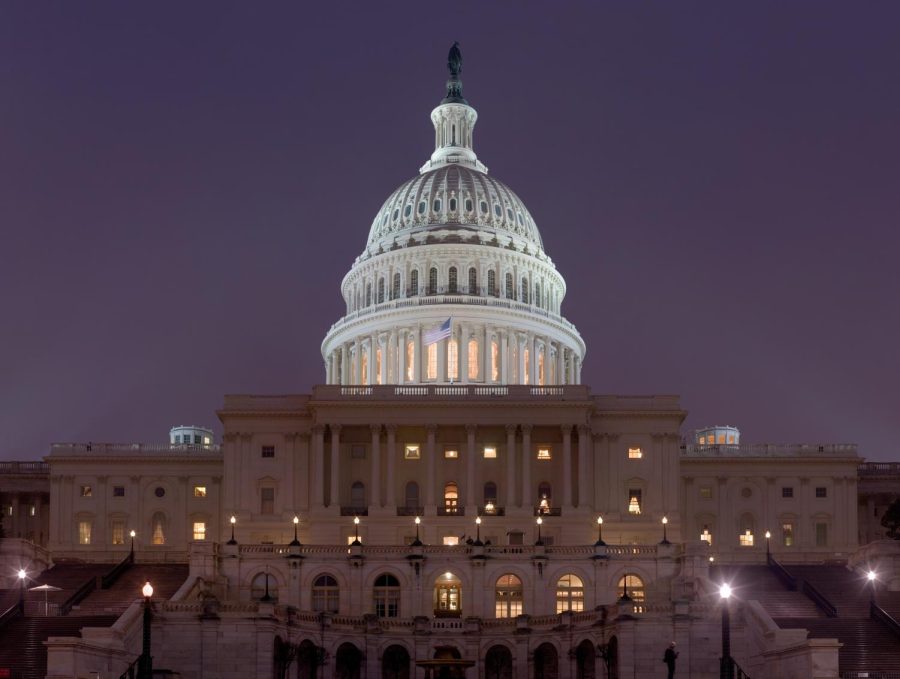US House Elections Part 2: A Final Breakdown
November 8, 2022
Oregonians wait this Election Day as the state’s mail-in ballots are tallied and results are totaled. This year many are awaiting the incoming results of the congressional elections that may drastically change the state’s representation. Oregonians have little idea which direction these districts will lean with the combination of new boundaries, a historically dissatisfied voting base, and the absence of an incumbent in three of the six districts.
The polling has evolved as November has neared, mostly favoring the Democrats, yet over the previous months Republican candidates have received more favorability. Half of the congressional districts have been projected by major media organizations to be solidly favored for one party, the other half has been rated from “Lean-D” to “Toss-Up” to “Lean-R”.
The “Safe” Elections
Democrat Suzanne Bonamici of District 1, (which encompasses the majority of the Ida B. Wells school community) is expected to win reelection handily. Democrats dominate the district with 40.4%, while only 17.55% are registered Republican. Her opponent is Christopher Mann, an Uber driver and Veteran. Among his campaign planks are to fund and support the police, and to stop the transport of illegal drugs across the border. Bonamici has outlined her support for abortion rights and other Democrat priorities such as fighting climate change and making education more equitable. No notable polling has been done for this race, all news outlets have projected the result to be ‘Solid-D’.
Republican Cliff Bentz of District 2 is facing his first reelection since taking office in 2020. District 2 encompasses rural Oregon east of the cascades and extends south to Medford. It is the state’s only congressional district to hold a Republican plurality, with only 21.03% registered Democrat. Bentz has allied himself with Donald Trump, joining colleagues in falsely contesting the 2020 presidential results in Pennsylvania. He describes himself as ‘America First’ and a supporter of the 2nd Amendment. His opponent in the race is Joe Yetter, a farmer and Veteran who advocates tackling the water crisis brought by climate change, and supports Veteran program reform among other goals. ABC’s FiveThirtyEight predicts a 99/100 chance for a Republican win.
Democrat Earl Blumenauer of District 3 is set to have another uncompetitive election. The 3rd District includes East Portland, Gresham, and Hood River as an addition from the new mapping. Blumenauer is a progressive Democrat, among his priorities with alternative energy and education, national Marijuana legalization is a key issue of his (which he has founded a congressional caucus for). Media predictions for the race are consistently ‘Solid-D’.
The ‘Contested’ Elections
In December 2021, Democrat Pete Defazio of District 4, a longtime progressive advocate, announced his retirement. This prompted a relatively politically moderate District to nominate two unique candidates. Democratic nominee Val Hoyle has served as state Labor Commissioner for 3 years and has been campaigning on a platform for reproductive rights, climate investments, among other issues. Her opponent is Veteran Alek Skarlatos, who received attention in 2015 for stopping a terrorist attack on a train in Europe. Skarlatos previously ran against DeFazio in 2020 and lost by 5 points. Polling has been close within the margin of error, yet has found Hoyle to narrowly lead, the most recent poll has found a tie between the two.
District 5 has been arguably the most contentious election this year. The district experienced a major redrawing that moved the border from the coast to east of the Willamette Valley, reaching to include the city of Bend. The Democrat incumbent Kurt Schrader was ousted in the primary by progressive challenger Jeremie McLeod-Skinner. Former Happy Valley mayor Lori Chavez-DeRemer won the Republican primary on a no-nonsense America First message. Predictions for this race have changed dramatically over time, media outlets had anticipated a slight favorability to Democrats, yet polling has led to a ‘Toss-Up’ to ‘Lean-R’ flip. DeRemer has won two of the polls released, leading one by 10 percentage points. As the election neared though, a September poll found McLeod-Skinner with a 3-point lead. The Democrat-to-Republican ratio in the district is 32.3%-27.65%, yet generally polling among voters a preference to the Republican party. FiveThirtyEight finds DeRemer to be slightly favored, projecting a 58/100 likelihood.
Announcements came last year that Oregon would be adding a 6th congressional seat to its delegation to account for the rapid population growth in the state. After a conflicted process of redrawing the map in the state legislature, the 6th district was outlined to cover the area southeast of Beaverton, to McMinnville, Salem, and the whole of the Yamhill and Polk counties. Democrats outnumber Republicans 31.5%-26.1%, and data shows those in the district today voted for Biden in 2020 by 13 points over Trump. Democrat state representative Andrea Salinas won the primary by defeating multiple opponents with heavy financial support from dark money and personal finances. Salinas’s opponent is Republican businessman Mike Erickson, who has previously ran unsuccessfully for local office in 1988, 1992, and Congress in 2006, and 2008. Of the 6 polls released, 3 have been won by Erickson, 3 by Salinas. Predictions for the race vary from ‘Lean-D’ to ‘Toss-Up’. Despite the polling, research from FiveThirtyEight projects a high likelihood of success from Salinas, giving her candidacy a 72/100.
Ultimately, many of these contested seats will be determined by the unaffiliated and moderate voters, the influence of money from corporations, unions, and party funds, and the national attitudes about President Biden and the country. The Oregon GOP may find success with the projections for Republicans to win the U.S. House nationally. The Democrats may rely on their historically consistent success in the state for the past decades. As the House serves as the representative of the people in Washington, it is yet to be seen how Oregon’s new delegation will serve the state’s interest. It is also unknown whether a political shift to either party will prove favorable to Oregon voters long-term.



